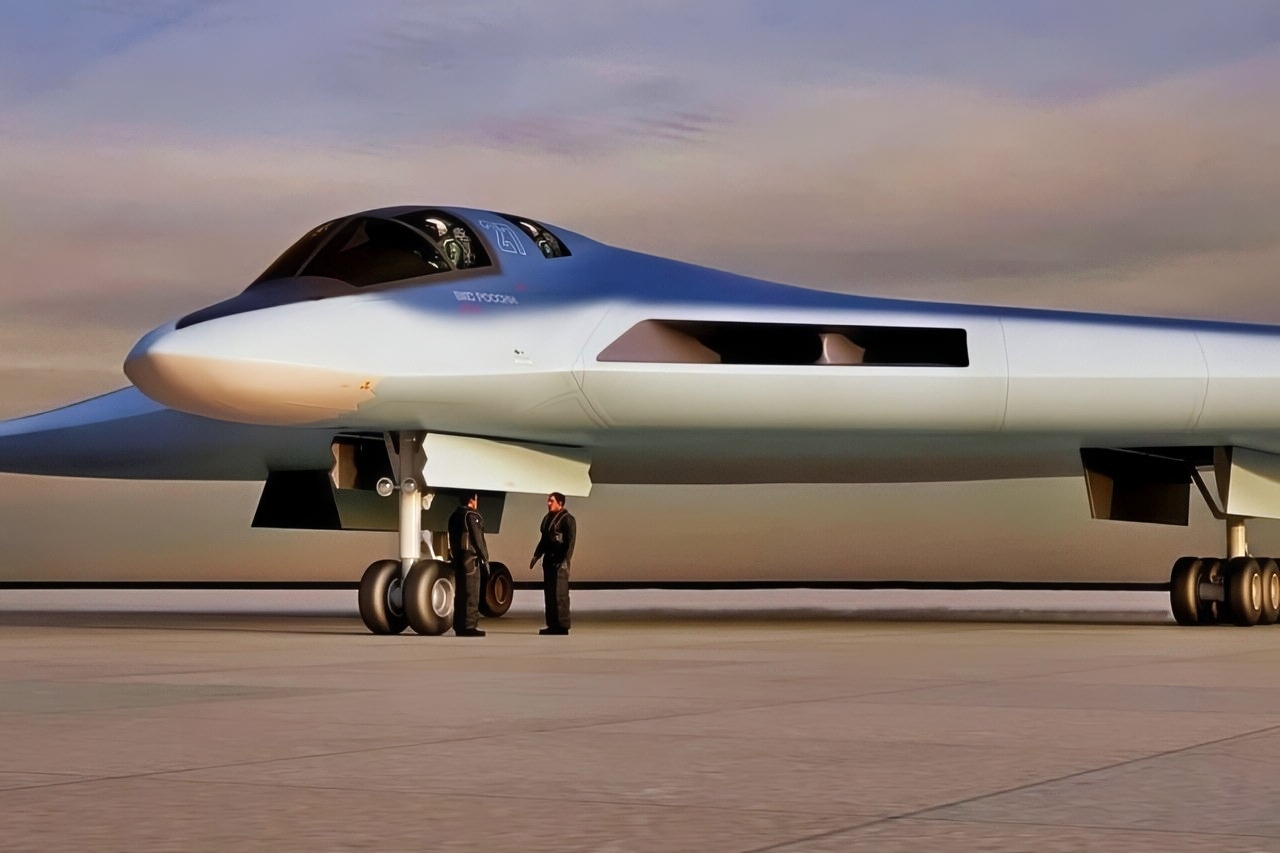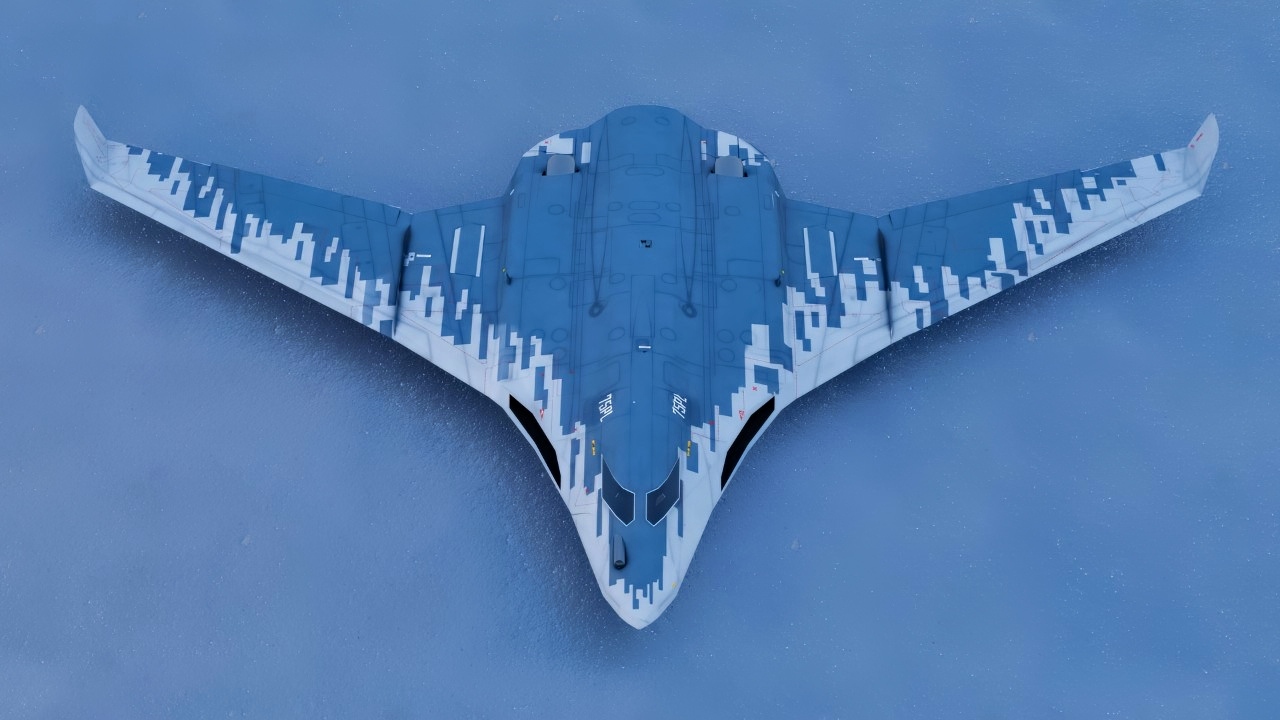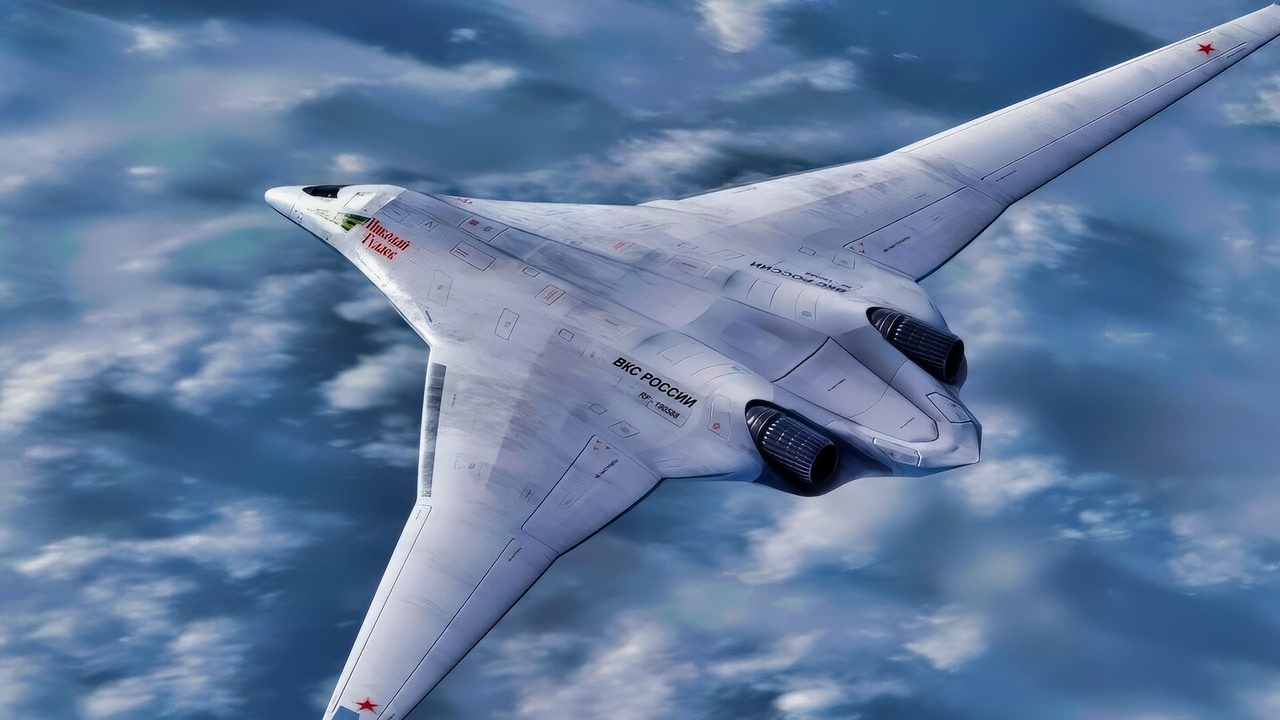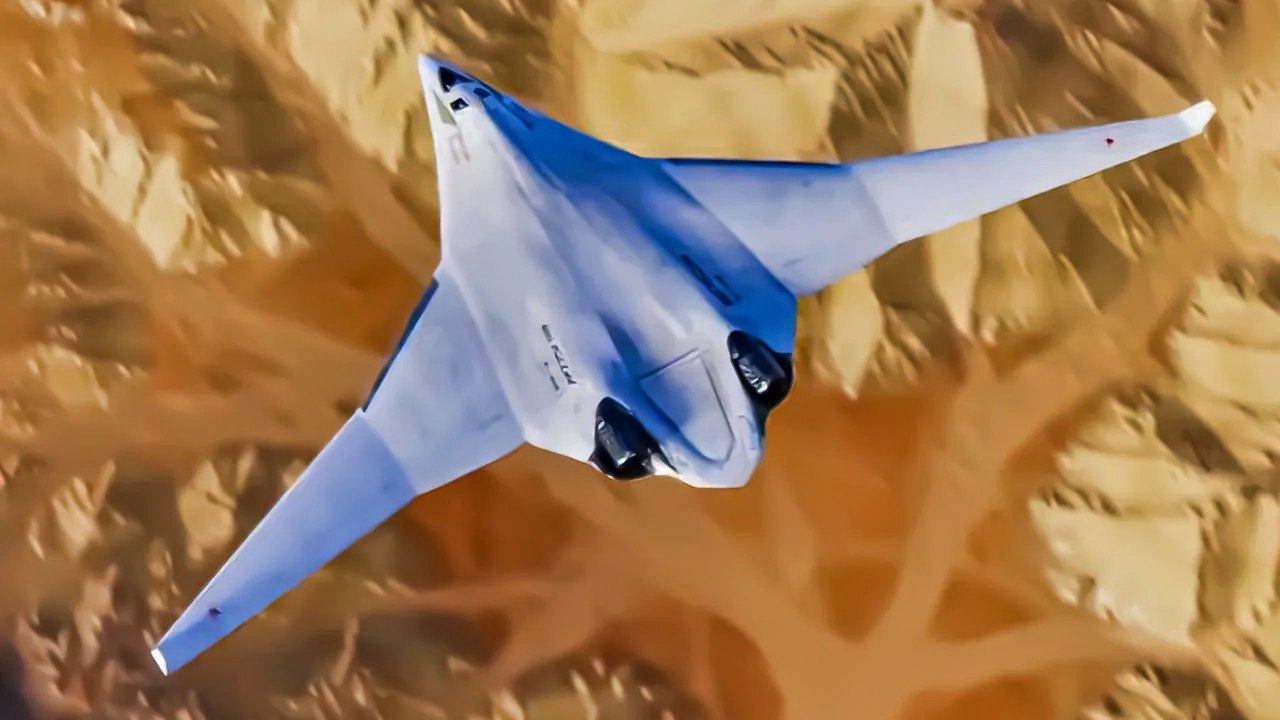PUBLISHED on August 15, 2025, 9:29 PM EDT – Key Points and Summary: Russia’s ambitious PAK DA sixth-generation stealth bomber program is more of a “flying fantasy” than a credible future threat, plagued by severe delays that push its service date into the 2030s, if it ever flies at all.
-Despite the clear need to replace an aging and battle-worn bomber fleet, Russia’s under-resourced and anachronistic industrial base, crippled by sanctions, is likely incapable of producing such a complex, stealthy aircraft at scale.
-While hyped as a “super weapon,” the PAK DA is a legend built on promise, not a realistic operational platform.
Will the Russian PAK DA Next-Generation Bomber Ever Fly?
The Russian Tupolev PAK DA next-generation bomber is being hyped as another “super weapon” for Vladimir Putin’s air force. PAK DA stands for “prospective aviation complex for long-range aviation.” The Russians use the code name “Poslannik” (Envoy) for the airplane. It is designed to rival the American B-2 Spirit and B-21 Raider stealth bombers.
The stealth flying wing PAK DA is meant to eventually replace the older Tu-95MS and Tu-160M3 fleet. Russia could potentially develop the PAK DA into an aircraft capable of challenging American air defense systems, such as the new Golden Dome defense shield.
Russian Bombers Have Endured a Mediocre War
Russia is looking to the future to bolster its aging bomber fleet. The older strategic airplanes have not made much of a difference in the war. They often hang back over Russian airspace and fire cruise missiles and glide bombs against Ukrainian military and civilian targets.
The bombers have also been destroyed on the ground from deep-hitting Ukrainian drone strikes. This has been disappointing to the Russians, who thought they could achieve air dominance by now and allow their bombers to fly regular missions to punish Ukraine at any time.
Sanctions Have Taken a Bite Out of the Entire Bomber Fleet
Russia has not produced a new strike airplane in several decades. The Tu-95MS long-range strategic bombers and the smaller and lighter Tu-22M3 bombers date back to the 1990s.
The Russians are trying to make more Tu-160Ms. Production is proceeding slowly, and the program is being hampered by sanctions and the scarcity of money and resources due to the war. These constraints and limitations are making the development of the new PAK DA difficult. The PAK DA may not enter into active duty until the end of the 2030s, and that may be an optimistic estimate.
Russia’s Stealth Bomber Program Has Fallen Behind the Competition
Putin’s generals see a new bomber to replace the aging fleet as the Americans and the Chinese surge ahead with sixth-generation strike airplanes. Russia needs improvements to its nuclear triad to keep up with the new US Golden Dome missile shield.
This would make strategic bombers that could sneak past air defenses in a stealthy manner more valuable. The Tu-160M is not stealthy, so that makes strategic strikes with a nuclear weapon more difficult if the United States uses a space-based and ground-based laser program to stymie ICBMs and nuclear-tipped cruise missiles.
Russia aims for the PAK DA to be more economically viable, with lower maintenance costs and reduced production expenses compared to the Tu-160M. However, research and development processes have slowed during the war. While Russian designers and engineers have settled on the flying wing design, many other features are still up in the air.
Stealth Protection from ‘All Types of Weapons’
The Russian military has stated that the airplane has “a completely new airborne defense system that is being developed for PAK DA, which will protect it from all types of weapons—radar and optical.”
The PAK DA will have an elite class of electronic warfare capability if technicians have their way. This will allow it to be more survivable against enemy air defense sensors and surface-to-air missiles.
In 2023, Russia reportedly designed a new facility for producing the PAK DA. State-run media believed the sixth-generation could be ready by 2027, but that estimate was wildly off target.
Could the Tu-160M Be a Test Bed for the PAK DA?
One way Russia is advancing the PAK DA program is to test new technologies on the Tu-160M and then later integrate them onto the new bomber after fielding the features in combat. This type of research and development makes sense, but that still means the Russians must navigate sanctions, especially on microelectronics and computer chips.
The Russians still have high hopes for the PAK DA. The airplane will have a range of 7,500 miles. This would mean the bomber could stay in the air for 36 hours and would need an extra crew member or co-pilot to fly it while the main pilot rests.
But the PAK DA program is behind the competition. The B-21 is already flying and has entered serial production. The Chinese H-20 next-generation bomber may have taken to the skies as well.
Moreover, Russia also needs to build more fifth-generation fighters such as the Su-57 Felon and the Su-75 Checkmate, both of which are supposed to be exported in significant numbers soon. There are simply not enough parts and components available.
Plus, the Russian air force may have only 120 bombers, and some of those are already obsolete, with extensive maintenance periods that have kept them out of the war.
For the PAK DA to be so far behind schedule is a concern for Russia’s strategic bomber program. The air force is struggling overall, and the fifth-generation fighters are not what they are cracked up to be. Putin will have to decide what he values most—new fighters or new bombers—and he may not have the luxury of producing both at the same time.
Hence, the PAK DA may be a paper tiger at the moment, and it will have difficulty getting off the ground. This means that the Russian nuclear triad will suffer as the Americans place the Golden Dome on high-priority status. The PAK DA program could never see the light of day.
PAK DA Bomber: A Collection of Artist Renderings

PAK DA Stealth Bomber Artist Rendering. Image Credit: Creative Commons.

PAK DA Stealth Fighter Screenshot from X Artist Image.

PAK DA Stealth Bomber. Image Credit: Creative Commons.

PAK DA Bomber from Russia. Image Credit: Creative Commons.

PAK DA Bomber from Russia. Image Credit: Creative Commons.

PAK DA Russian Bomber. Image Credit: Creative Commons.

PAK DA bomber artist rendition.
About the Author: Dr. Brent M. Eastwood
Brent M. Eastwood, PhD is the author of Don’t Turn Your Back On the World: a Conservative Foreign Policy and Humans, Machines, and Data: Future Trends in Warfare plus two other books. Brent was the founder and CEO of a tech firm that predicted world events using artificial intelligence. He served as a legislative fellow for U.S. Senator Tim Scott and advised the senator on defense and foreign policy issues. He has taught at American University, George Washington University, and George Mason University. Brent is a former U.S. Army Infantry officer. He can be followed on X @BMEastwood.
Military Matters
The F-22 Raptor Just Keeps Getting Better










